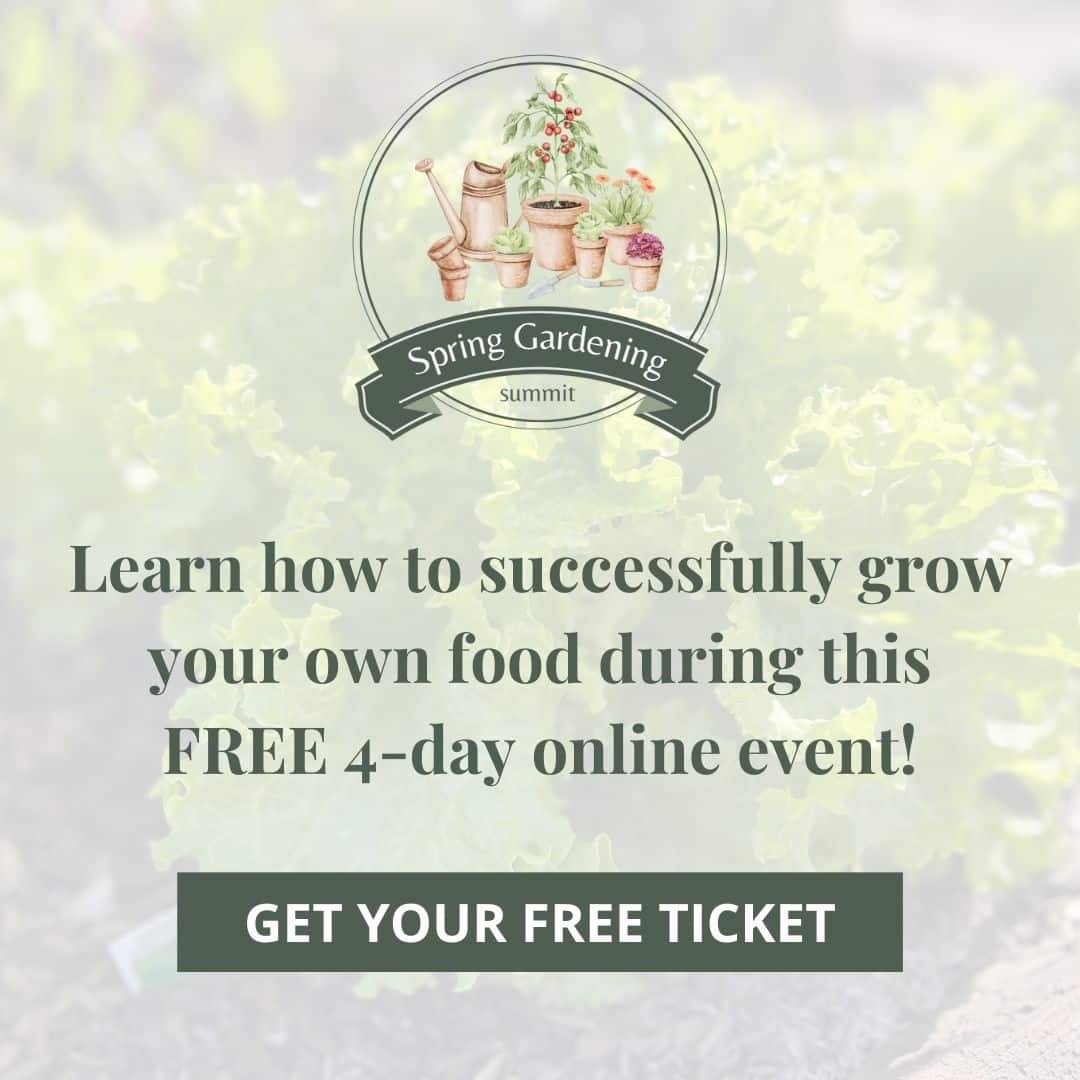How to Get Rid of Aphids Naturally
This post may contain affiliate links. Read my full disclosure here.
Aphids are one of the most common garden pests, and they can quickly damage plants by sucking sap from leaves and stems. If left unchecked, they can weaken plants, cause distorted growth, and even spread diseases. Fortunately, there are several natural ways to control aphids without resorting to harsh chemicals.
A big thing to keep in mind is that aphids show up when plant are stressed. We rarely get them in our main gardens at this point, but still have them show up in the greenhouse. You would think that greenhouse plants are more protected from insects, but nature always finds opportunities, good and bad.
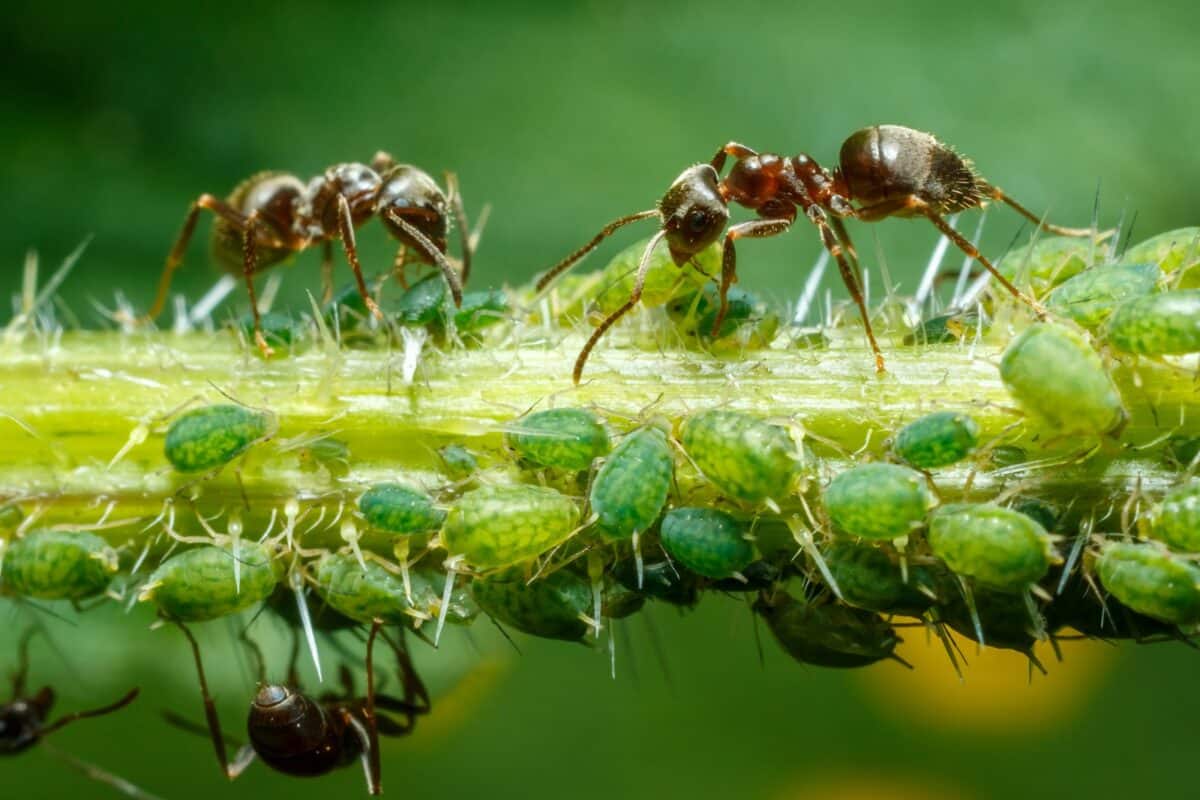
Our biggest plant stressor is heat fluctuations. Even with vents open, fans running, and shade cloth, sometimes summer temps still spike. The soil also gets compacted and has excess nitrogen because the duck patrol hangs out in the greenhouse in winter. The predators that eat aphids are less common in the greenhouse, too.
I’m sharing identification tips, plus quick fixes and long term methods to get rid of aphids.
Table of contents
Identifying Aphids
Aphids are small, soft-bodied insects that come in various colors, including green, black, red, and yellow. They cluster on the undersides of leaves and stems, excreting a sticky substance called honeydew. This can attract ants and promote sooty mold growth. If you notice curling leaves or stunted plant growth, aphids may be the culprit.
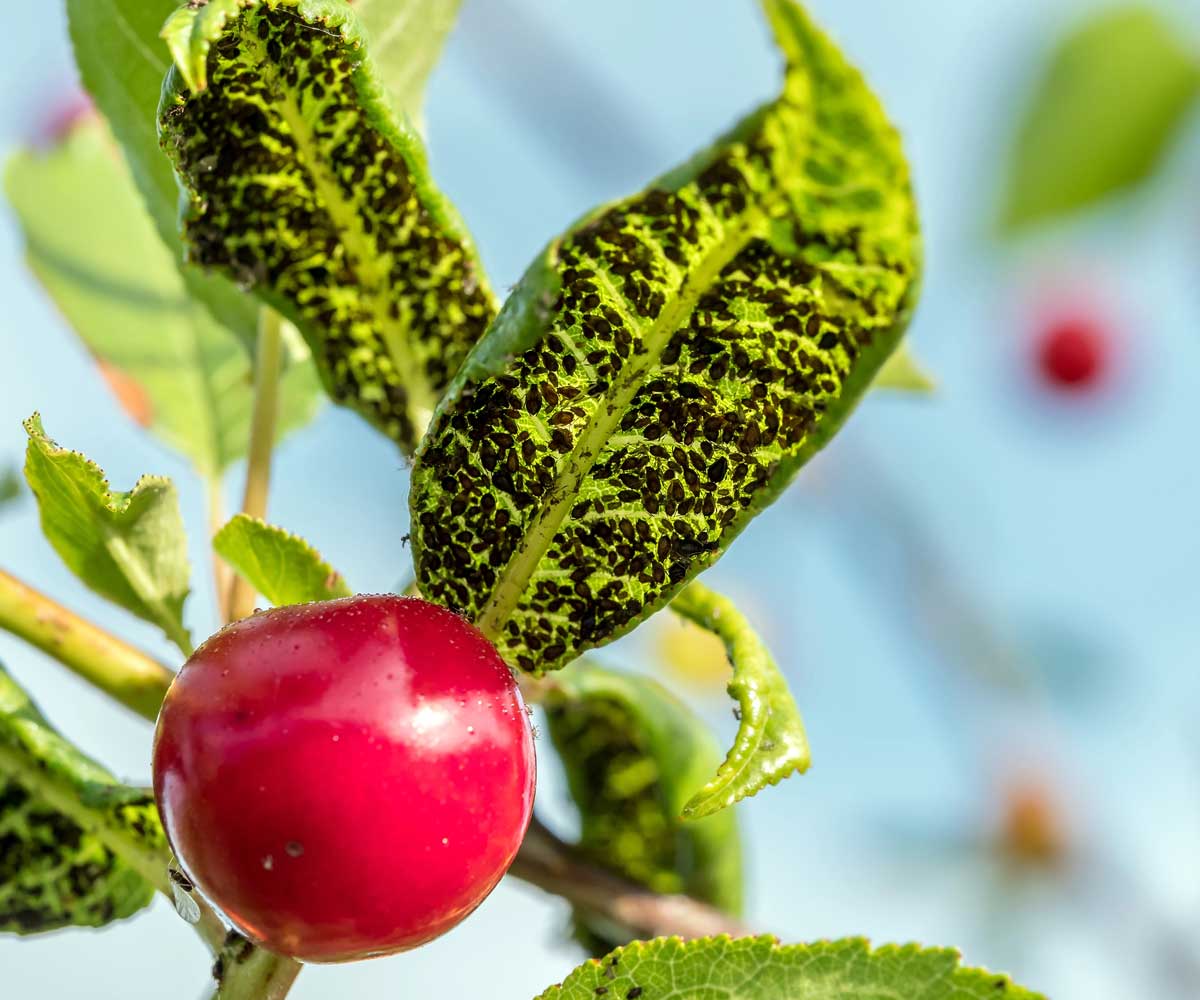
Aphids can also spread diseases such as papaya ringspot virus. It’s best to take steps to get them under control to reduce direct and indirect damage.
Natural Ways to Get Rid of Aphids
Aphids are annoying, but not that durable. Their soft, squishy little bug bodies make them a favorite snack of other garden predators. They also respond to relatively gentle control methods that don’t work well on tougher insects. Most aphids are wingless, so they can’t fly away from the treatments.
1. Blast Them with Water
A strong jet of water from a garden hose can dislodge aphids from plants. This method is effective for minor infestations and won’t harm beneficial insects.
2. Apply a Homemade Aphid Spray
A simple DIY spray can be an effective and eco-friendly way to control aphids. Here’s an easy recipe:
Aphid Spray Recipe:
- 1 teaspoon mild dish soap
- 1 quart (4 cups) of water
- Optional: A few drops of neem oil for added effectiveness
Instructions:
- Mix the ingredients in a spray bottle and shake well.
- Spray directly onto affected plant areas, especially the undersides of leaves.
- Repeat every few days until the aphids are gone.
3. Introduce Beneficial Insects
Ladybugs, lacewings, and parasitic wasps are natural predators of aphids. You can attract these beneficial insects by planting flowers like marigolds, dill, and yarrow.
Would you like to save this?
See “Attracting Beneficial Insects to Help Your Garden Thrive” for more beneficial insect tips.
4. Encourage Birds and Amphibians in Your Garden
Birds, such as chickadees and wrens, feed on aphids. Adding birdhouses and birdbaths can help attract these natural pest controllers.
Frogs, toads, and salamanders are wonderful garden companions, munching on a wide assortment of pests, including aphids. They also enjoy water features, as well as rocks, mulch, and other cover in the garden. Amphibians are very sensitive to chemicals, so it’s important to avoid toxic sprays if you want them in your garden.
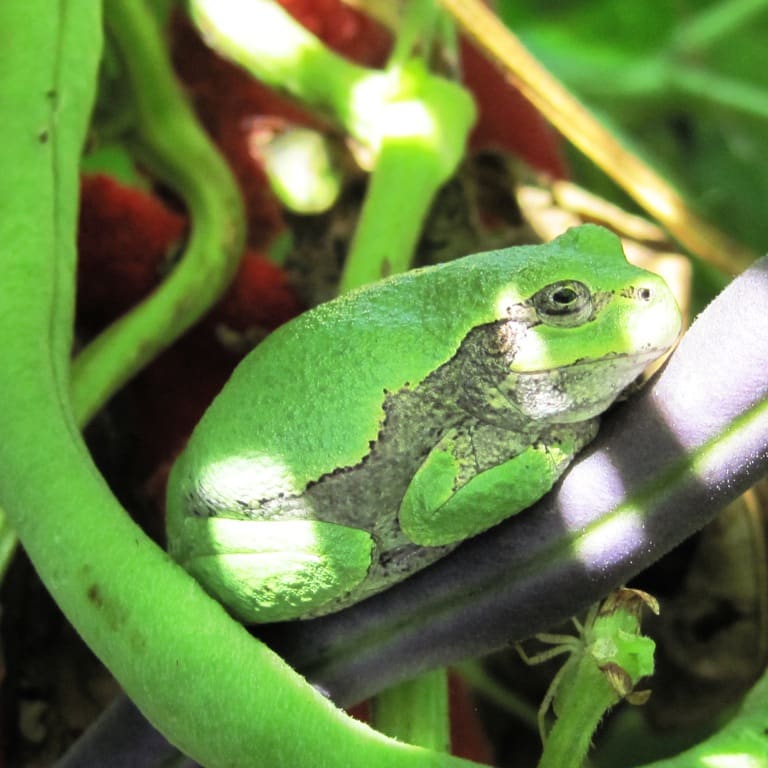
5. Use Companion Planting
Some plants repel aphids, such as garlic, chives, and onions. Interplanting these with susceptible plants can help keep aphids at bay.
See “Companion Planting for the Garden (The Easy Way)” for my no fuss method to add these plants.
6. Use Neem Oil
Neem oil is a natural insecticide that disrupts the growth and reproduction of aphids. Mix according to the label instructions and spray it on plants as needed. Neem oil is rather pungent, and can leave a residue on plants, so it’s not my first choice for treatment.
Prevention Tips
- Regularly inspect plants for signs of aphids.
- Keep plants healthy with proper watering and fertilization.
- Remove heavily infested leaves or stems to prevent further spread.
- Avoid excessive use of nitrogen fertilizers, which can attract aphids.
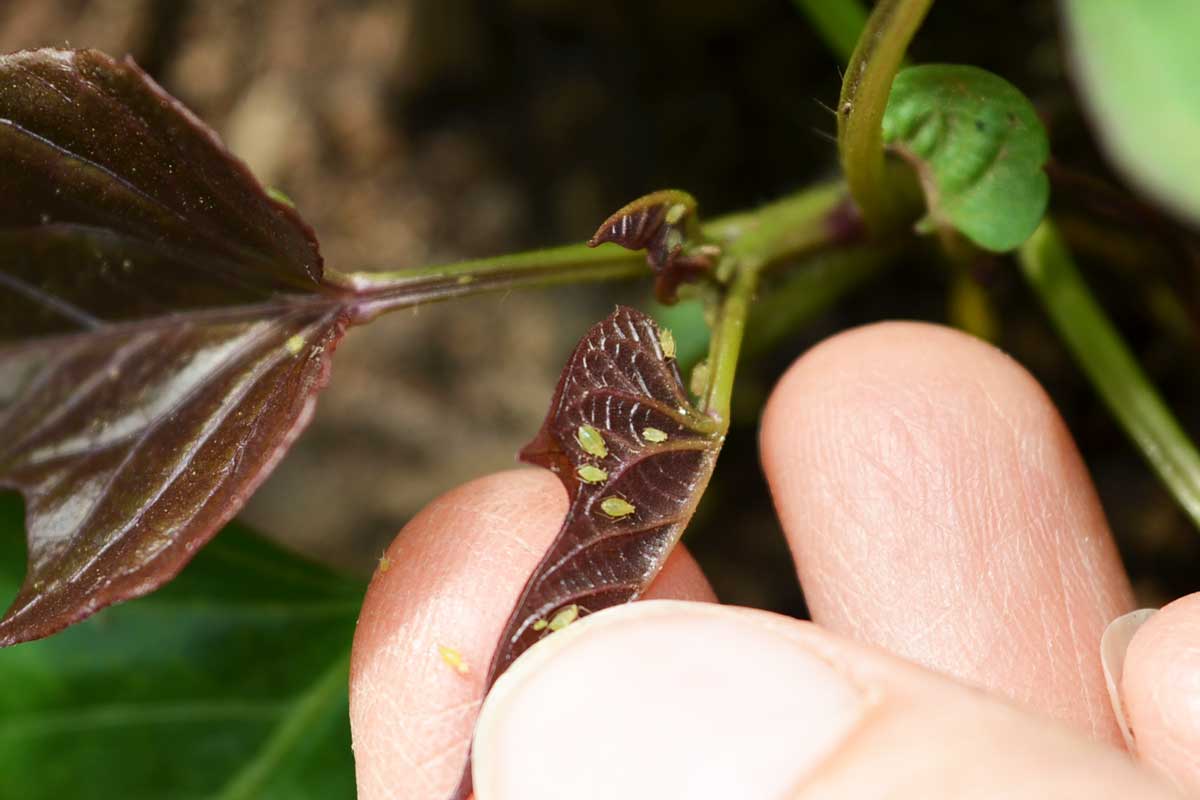
The Best Defense is a Good Offence – Get Rid of Aphids Long Term
In the book, “The Anatomy of Life & Energy in Agriculture“, the author suggests that pest show up to clean up plants that are nutrient deficient. Fix your nutrient problems, and pests naturally disappear.
We’ve seen this concept in action in our garden. When we first started growing our own food, the soil was in rough condition from construction. Over the years as the soil improved, so did pest problems. When pests show up (like aphids in the greenhouse) it’s a sign that those plants are stressed and need some TLC.
The nutrients that are low when aphids show up are calcium, phosphorous, iron, and copper. Often, if you start with the primary missing mineral (in this case, calcium), the others may correct themselves. I like to use a foliar feeding of homemade calcium fertilizer. You can see how I make this in the video below.
Use these natural methods to get rid of aphids and keep your garden thriving without relying on harmful chemicals.
If you want to learn more, check out my presentation “How to Get Rid of your Toughest Garden Pests” in the FREE Spring Gardening Summit, February 24-27, 2025.

This article is written by Laurie Neverman. Laurie and her family have 35 acres in northeast Wisconsin where they grow dozens of varieties of fruiting trees, shrubs, brambles, and vines, along with an extensive annual garden. Along with her passion for growing nutrient dense food, she also enjoys ancient history, adorable ducks, and lifelong learning.


